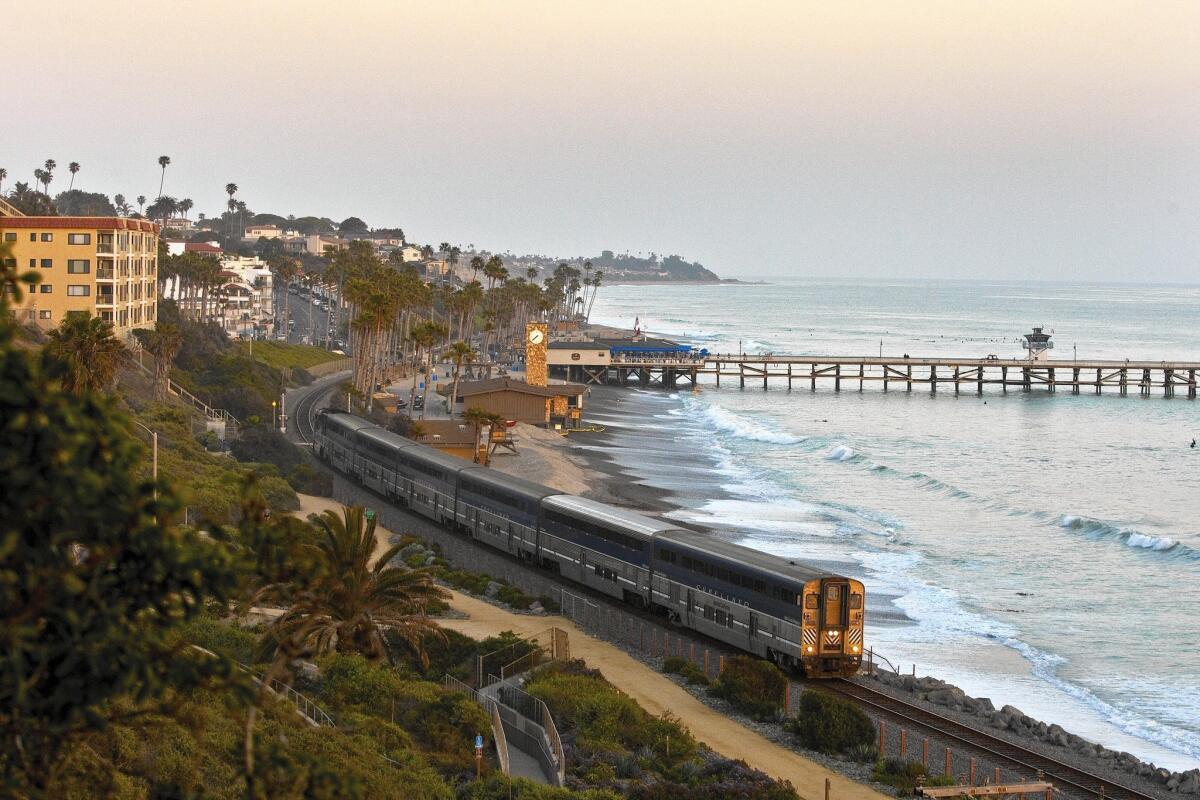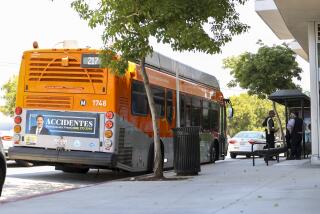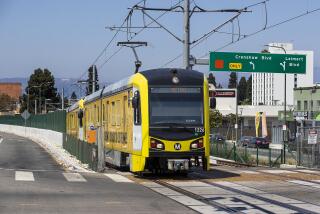Little-known agency keeps commuter rail network on track

The 351-mile rail corridor that runs along the coast between San Diego, Los Angeles and San Luis Obispo is the second-busiest intercity route in the nation.
Its annual passenger load of 7.4 million is surpassed only by that of the northeast corridor between Boston and Washington, D.C., which handles more than 11.4 million a year.
But keeping those trains running on time — and safely, as they occasionally share tracks with freight traffic — is a constant challenge. The job has fallen to a little-known regional authority known as the LOSSAN Rail Corridor Agency.
During the last 25 years, the agency has helped synchronize schedules so passengers do not have to wait long to make connections. Maintenance and construction are better coordinated to keep trains running without significant delay.
It also tries to foster good relationships among the region’s half-dozen railroads so riders can better navigate a complicated network crowded with freight and passenger trains.
Rail projects to accommodate more trains are underway, and the agency is starting to address track and scheduling issues along the popular route between Los Angeles and San Diego.
“I’m all for anything that integrates travel and fares,” said Anthony Kemp, an English professor at USC who regularly rides the Metrolink commuter line from his east San Gabriel Valley home in Claremont to the campus near downtown L.A.
Kemp, who is from England, gave the agency good marks but said there is room for even more improvements. For example, European passenger railroads have long had convenient schedules and transit passes, such as the Oyster Pass in London, that allow riders to go from trains to buses to subways without buying a ticket for each boarding.
“That would be absolutely great to have that here,” he said.
LOSSAN’s primary focus is on Metrolink, which serves six Southern California counties; Amtrak’s Pacific Surfliner, which runs from San Diego to San Luis Obispo; and the Coaster, a 60-mile commuter line between Oceanside and downtown San Diego.
Also using the route are several Amtrak cross-country trains and three freight lines: Union Pacific, the Burlington Northern Santa Fe Railway and the Pacific Sun Railroad, a small operation in northern San Diego County.
“The cooperation today is better than it has ever been,” said Darrell Johnson, chief executive of the Orange County Transportation Authority, which administers the rail agency. “LOSSAN has given us the opportunity to make decisions that are better for passengers.”
The agency’s accomplishments include an online trip planner, joint marketing strategies and timetables that show riders the schedules of all the lines, plus train and public transit connections.
Amtrak bus links to Metrolink trains have been improved, and more express service has been added to the Pacific Surfliner, along with shortened times for station stops.
One of the agency’s early steps was to bring representatives of all freight and passenger railroads together twice a year to coordinate schedule changes. Before the policy, railroads revised their timetables without notifying one another, creating inconveniences for passengers.
The need for such an agency may grow greater, as rail officials predict that the number of weekday trains will increase along the corridor from 178 in 2014 to 274 by 2030. Planners expect about 10.1 million to 15.2 million annual passengers by then, depending on how much rail capacity can be added. About $6 billion to $8 billion in capital improvements are planned.
Also on the agency’s agenda are plans to craft uniform fare and ticketing policies, such as e-ticketing by cellphone or computer and passes that can be used across all rail and transit lines. Metrolink and the Coaster now have the Rail 2 Rail program, which allows riders to use their monthly passes to ride Amtrak.
In one of its latest efforts, the agency is preparing to take over management of the Pacific Surfliner from Caltrans, which has administered and funded the line on behalf of Amtrak. The service now carries about 2.7 million passengers a year.
The shift to local control of that line is scheduled to be completed midyear. Former Burbank Mayor Dave Golonski, chairman of the LOSSAN board, said there are various proposals for the Surfliner, including improved food and beverage service, adding Wi-Fi, more trains to Santa Barbara and having 12 daily round trips between L.A. and San Diego seven days a week.
Rail officials say that asserting local control over an Amtrak train managed by Caltrans has been successful in Northern California. In 1998, a joint-powers authority took over the Capitol Corridor, a 168-mile line linking San Jose, Oakland, Sacramento and Auburn.
David Kutrosky, the railroad’s managing director, said ridership has grown, on-time performance is better and amenities have been added for riders, such as Wi-Fi and e-ticketing.
In addition to assuming oversight for the Surfliner, the Southern California agency and Caltrans have initiated a “schedule optimization study” to assess rail operations from Los Angeles to San Diego.
“We hope the process moves forward as soon as possible,” said Matthew Tucker, chief executive of the North County Transit District, which operates the Coaster. “We need to develop better connections, close gaps in the schedule and try to optimize the assets of the railroad. A number of things have already been done.”
One of the agency’s greatest challenges, officials say, will be expanding service on a corridor where trains are already straining capacity. The main obstacles are 233 miles of single track and a lack of sidings. Delays can occur on single track because trains must wait for others to pass.
About $1 billion is being spent to add a second set of rails along portions of the route in San Diego County. But officials say more double-tracking is needed.
And then there is high-speed rail with plans to serve Southern California. Project officials want to share the right-of-way of conventional rail lines in the Los Angeles area. About $1 billion in bullet train funding has been earmarked to upgrade local tracks so trains can travel faster and more safely.
In 2011, LOSSAN officials began to engage the project, adding a representative from the California High-Speed Rail Authority as a non-voting board member.
Follow @LADeadline16 for transportation news
More to Read
Sign up for Essential California
The most important California stories and recommendations in your inbox every morning.
You may occasionally receive promotional content from the Los Angeles Times.











